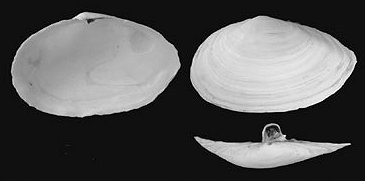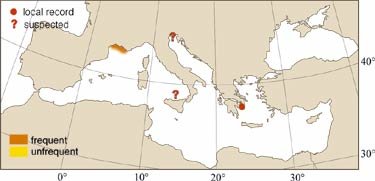
|
Relevant Synonyms
Misidentification
|
|
| photo: S. Gofas |
|
SHORT
DESCRIPTION
color :
chalky white shell with thin greyish/brownish periostracum. Interior of shell brown.
common size :
to 152 mm in length, to 60 mm in height. |
DISTINGUISHING CHARACTERISTICS
BIOLOGY / ECOLOGY
habitat :
muddy, sandy and gravelly bottoms, intertidal from the shore and estuaries mainly in shallow water down to 75 m. Highest densities in muddy sand areas. |
|
1st
Mediterranean record
|

|
|
DISTRIBUTION
|
ESTABLISHMENT SUCCESS
speculated reasons for success :
|
|
|
MODE OF
INTRODUCTION |
IMPORTANCE TO
HUMANS |
|
KEY
REFERENCES
|
|
|